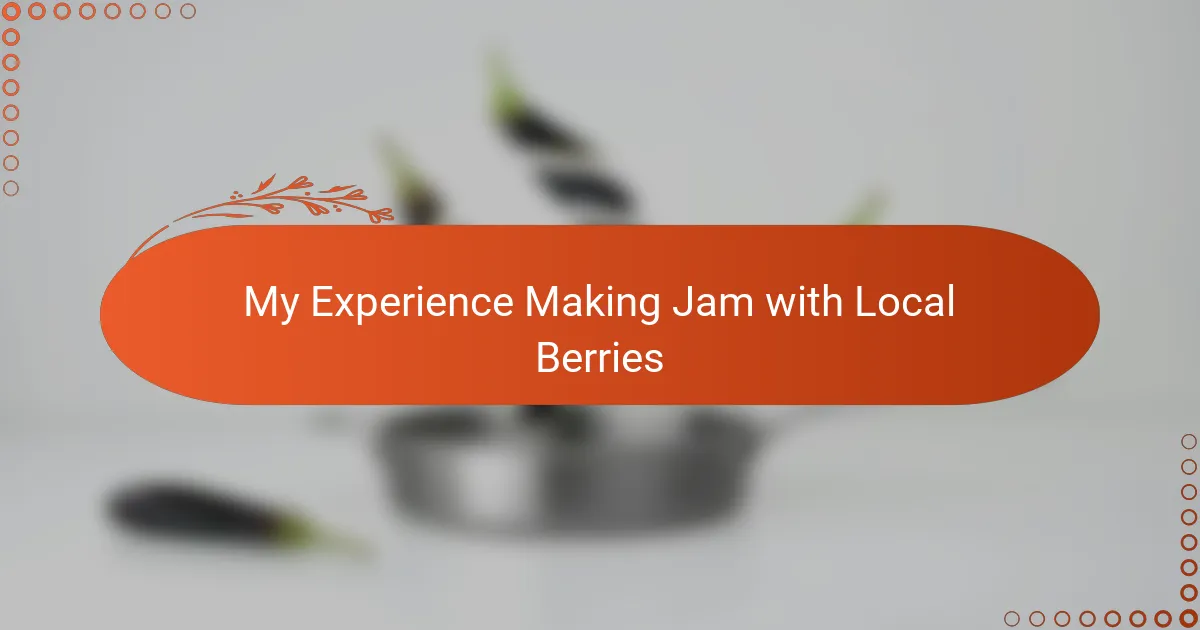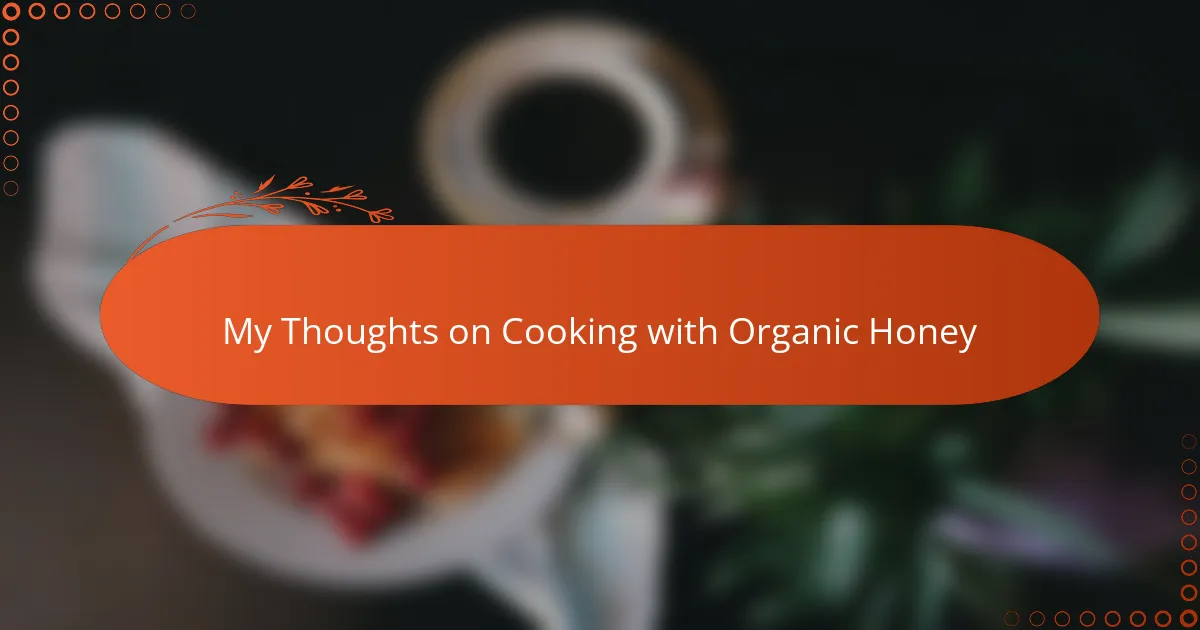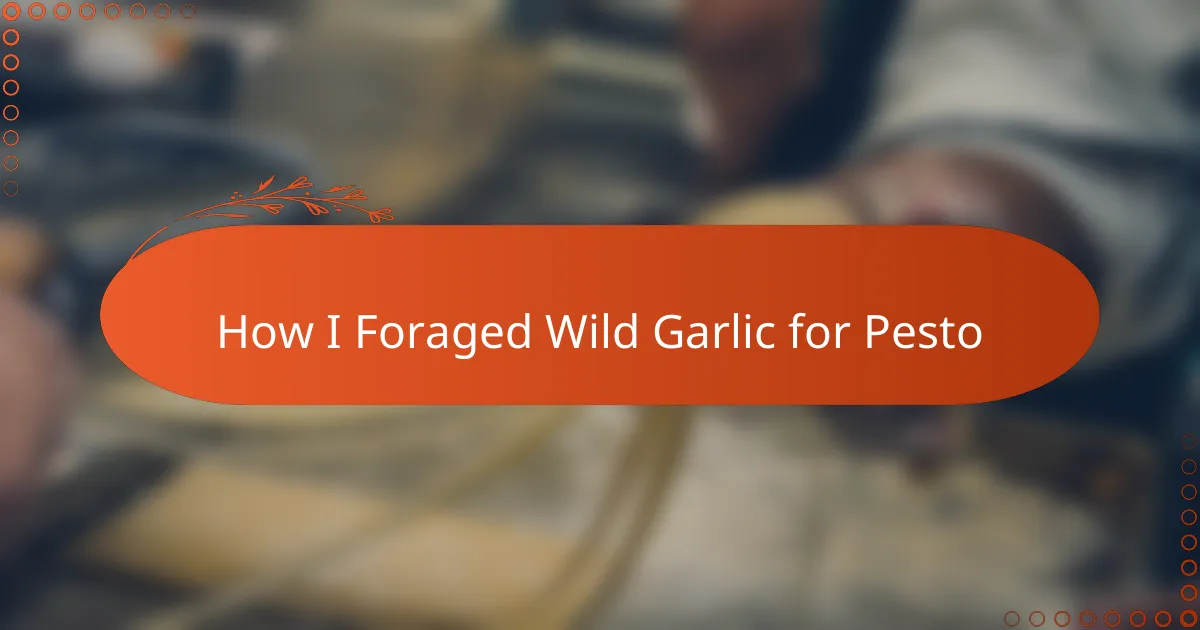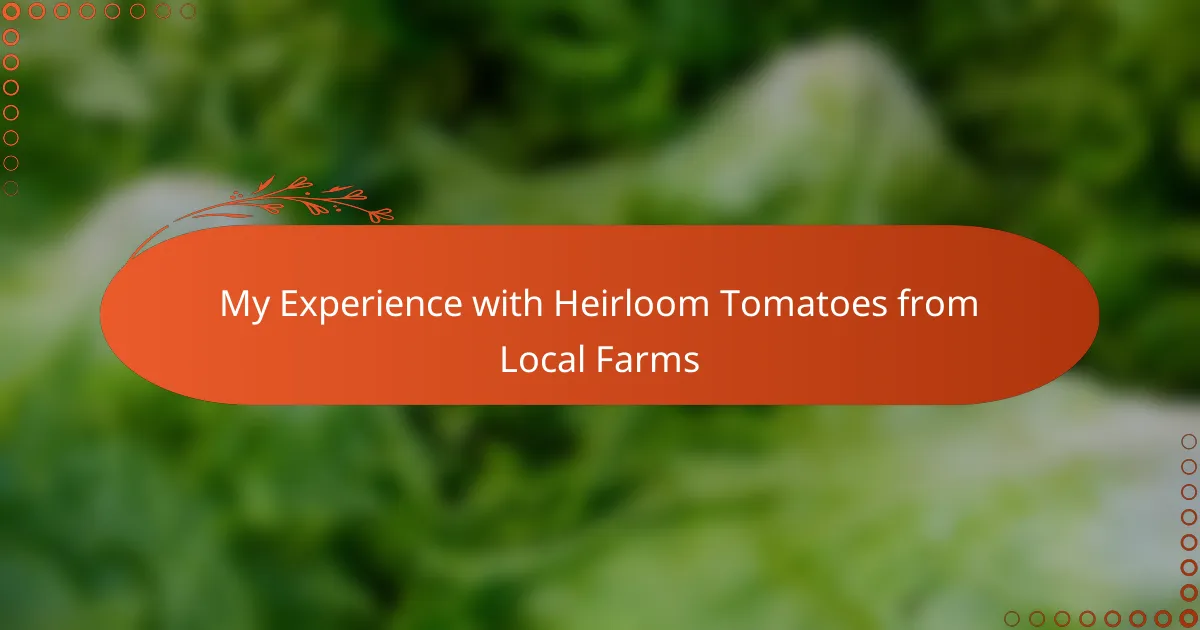Key takeaways
- Understanding the balance of fruit, sugar, and pectin is crucial to achieving the desired jam consistency and flavor.
- Choosing ripe, local berries enhances natural sweetness and flavor, leading to more successful jams.
- Careful preparation, including washing and sorting the berries, is essential to avoid spoilage and ensure quality.
- Experimenting with cooking time and adjusting sugar levels based on the fruit’s sweetness can improve the overall texture and taste of the jam.
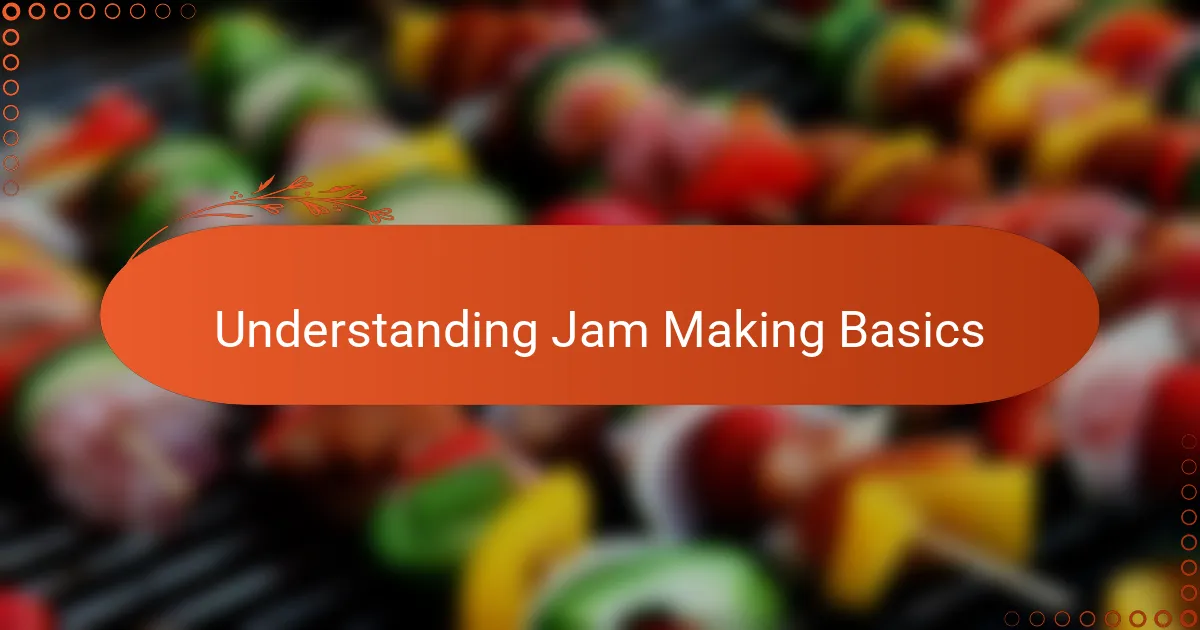
Understanding Jam Making Basics
Jam making, at its core, is about transforming simple, local fruits into something lasting and delicious. I’ve found that understanding the balance between fruit, sugar, and pectin is essential—too much or too little of any can change the texture and taste completely. Have you ever wondered why some jams set perfectly while others remain runny?
From my experience, the process is almost a gentle science. Heat activates the natural pectin in berries, causing the mixture to thicken as it cools. I remember my first batch turning out more like syrup—frustrating but a great learning moment about how temperature and timing really matter.
What fascinates me most is how such a straightforward method can result in so many variations. Each berry, season, and even batch feels unique, which makes every jar feel like a small triumph. Isn’t that part of the charm of jam making—capturing a moment in time within a jar?
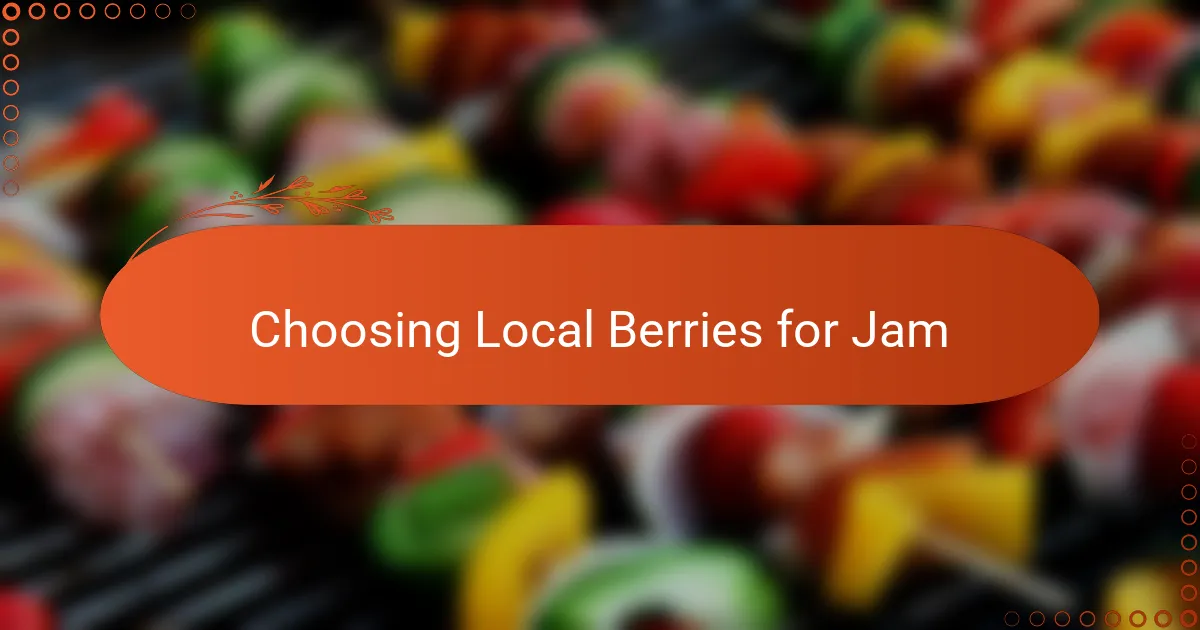
Choosing Local Berries for Jam
Choosing the right local berries has always felt like the first, crucial step in my jam-making adventures. Freshness is everything; I’ve learned that berries picked at their ripest offer the best natural sweetness and flavor, sparing me from the temptation to add too much sugar. Have you noticed how a handful of perfectly ripe berries can smell like summer itself?
One time, I picked wild blackberries right after a warm rain, and the jam turned out exceptionally rich and vibrant. That experience taught me that seasonality isn’t just about what’s available—it’s about selecting the moment when berries carry the most character. It makes me think, how often do we overlook the subtle differences between a berry picked today versus one harvested a week ago?
Another important factor for me is variety. Local berries vary so much, even within a small area, that choosing between raspberries, blueberries, or elderberries can change the jam’s personality entirely. I like to experiment with mixes, but picking a single, well-flavored berry often results in a more focused and satisfying taste. Have you tried letting the berries speak for themselves without too many additions? It’s a simple joy I always come back to.
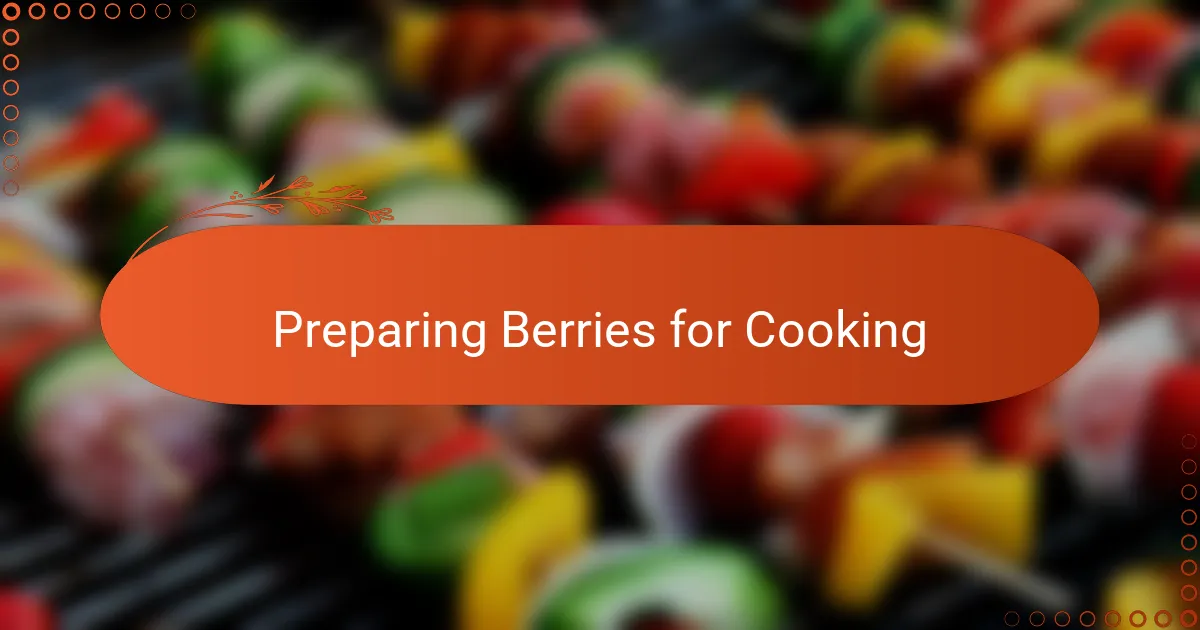
Preparing Berries for Cooking
Before I even start cooking, I always take time to gently rinse the berries under cool water. This step seems simple, but from my experience, it’s crucial to remove dirt and tiny debris without bruising the delicate fruit. Have you ever noticed how quickly berries can go mushy? Handling them carefully at this stage makes all the difference later on.
Sorting is another part I never skip. I spread the berries out and pick through them, removing any that are overly soft, moldy, or unripe. One batch I didn’t do this with ended up with a bitter note that I couldn’t quite place until I realized I’d missed a few bad berries. It taught me that a little patience up front saves disappointment down the line.
Sometimes, I like to lightly crush the berries before cooking to release their juices faster. But I learned that overdoing it can turn the jam too runny. Balancing texture is a bit of an art, and I find myself asking, what kind of mouthfeel am I aiming for this time? That question quietly guides how much I mash the fruit, giving each batch its own personality.
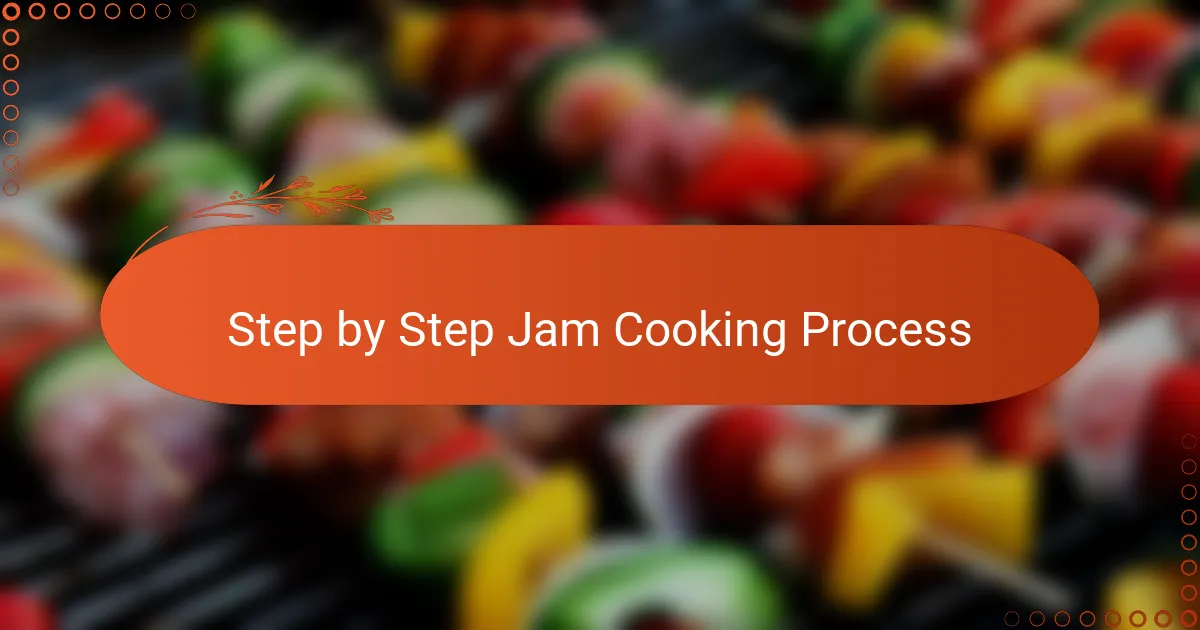
Step by Step Jam Cooking Process
Once I start cooking the jam, I combine the prepared berries with sugar and a touch of lemon juice in a heavy-bottomed pot. I like to bring the mixture slowly to a gentle boil, stirring frequently to prevent sticking and burning. Have you ever noticed how the aroma shifts in the kitchen as the jam thickens? It’s like the berries themselves are whispering sweet secrets.
Timing is everything in this stage. From my experience, letting the jam bubble for about 15 to 20 minutes usually does the trick, but I keep a close eye on the texture—it should coat the back of a spoon without running off too quickly. One memorable batch I rushed ended up too soft; it was a reminder that patience really pays off in jam making.
When I think the jam has reached the right consistency, I perform the classic spoon test—dropping a small spoonful onto a cold plate and watching how it gels as it cools. That moment is always a mix of excitement and nervousness for me. Can I trust that this batch will set just right? It feels a bit like waiting to see if your hard work will turn into a sweet, lasting reward.
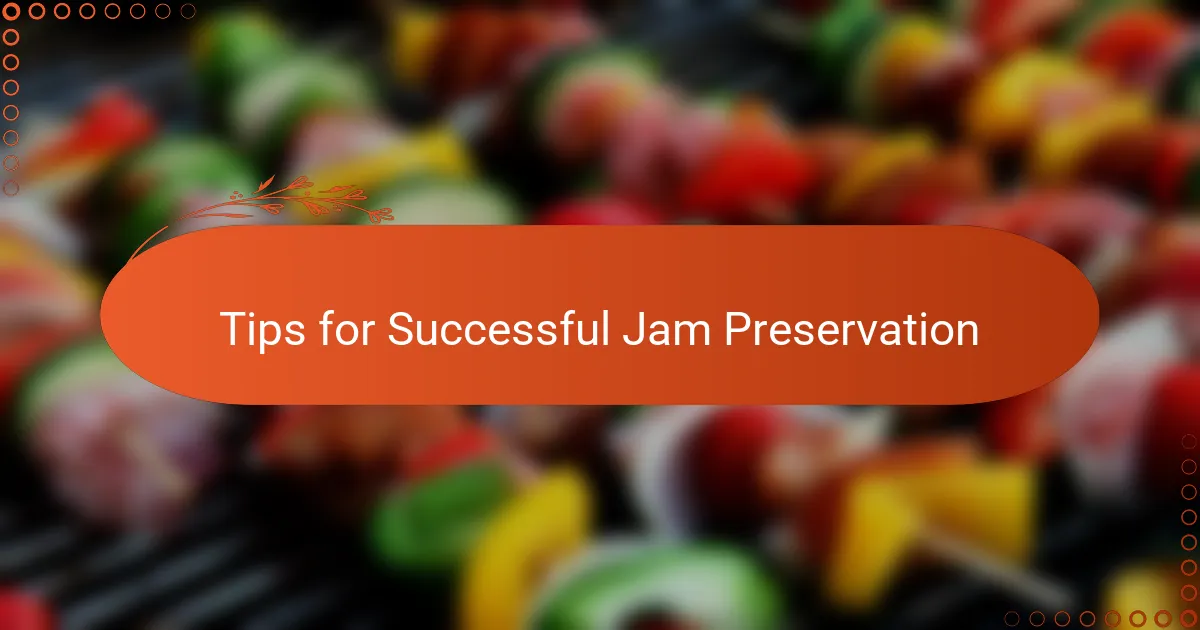
Tips for Successful Jam Preservation
One tip I’ve come to trust is ensuring my jars and lids are sterilized thoroughly before filling them with hot jam. It sounds tedious, but I learned the hard way when a batch spoiled because I rushed this step. Ever wondered why your beautiful jam sometimes goes off quickly? Cleanliness at this stage is non-negotiable in my experience.
Sealing the jars properly has also been a game changer. I make sure to fill the jars while the jam is still boiling hot and to leave the recommended headspace—not too tight, not too loose. I’ve found this prevents air pockets that invite spoilage. Have you ever heard that satisfying “pop” when a jar seals? It’s incredibly reassuring and feels like icing on the jam-making cake.
Lastly, storing the jars in a cool, dark place makes a huge difference. One summer, I kept a batch on a sunny windowsill, and the color and flavor faded fast. Now, I treat my jam like a precious find, tucked away from light and heat, prolonging its freshness. Isn’t it amazing how simple steps can protect the fruits of your labor for months?
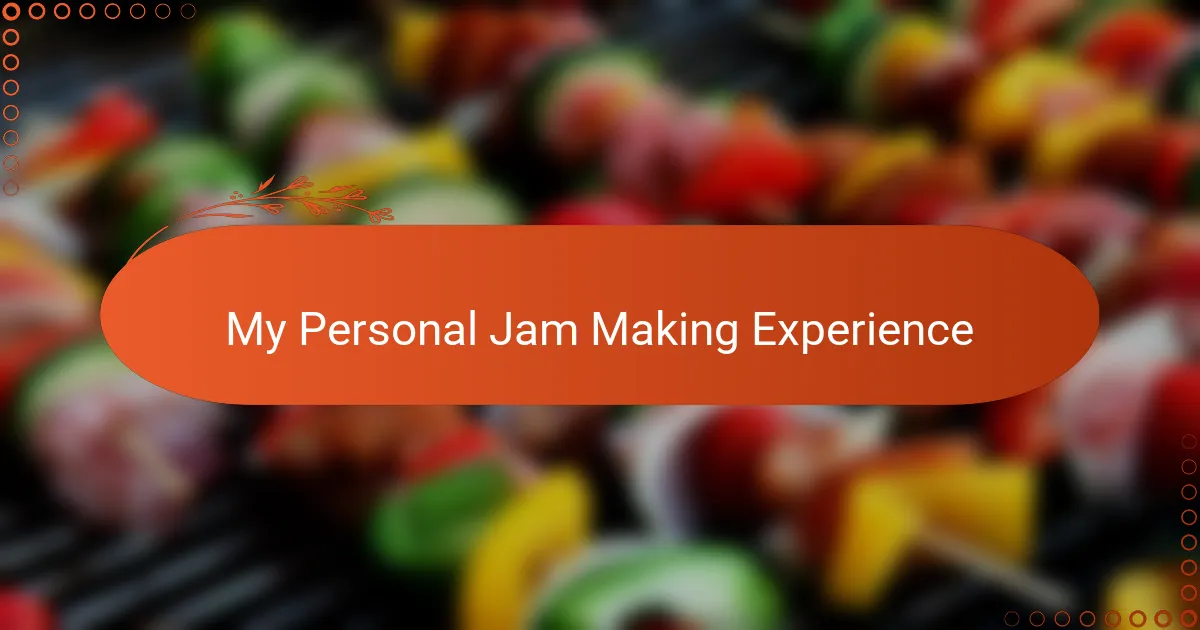
My Personal Jam Making Experience
When I first started making jam with local berries, I was surprised by how hands-on the process feels. I remember standing in my kitchen, stirring the bubbling mixture, and feeling a genuine connection to the fruit that had come straight from nearby bushes. It made me appreciate those small moments—like the scent filling the air—as truly rewarding.
One batch stands out in particular: I was nervous about the consistency, but when I did the spoon test and saw the jam spread slowly yet hold its shape, I felt a real sense of accomplishment. Have you ever experienced that simple joy of seeing your effort come to life in a jar? For me, it’s a reminder that patience and attention really pay off.
Sometimes the process isn’t perfect, though. I’ve had batches turn out runnier than expected or with unexpected textures, and honestly, those imperfect results taught me the most. They pushed me to tweak my technique, listen more closely to the fruit’s cues, and embrace the little surprises that make jam making a personal adventure. Isn’t that what makes it so special?
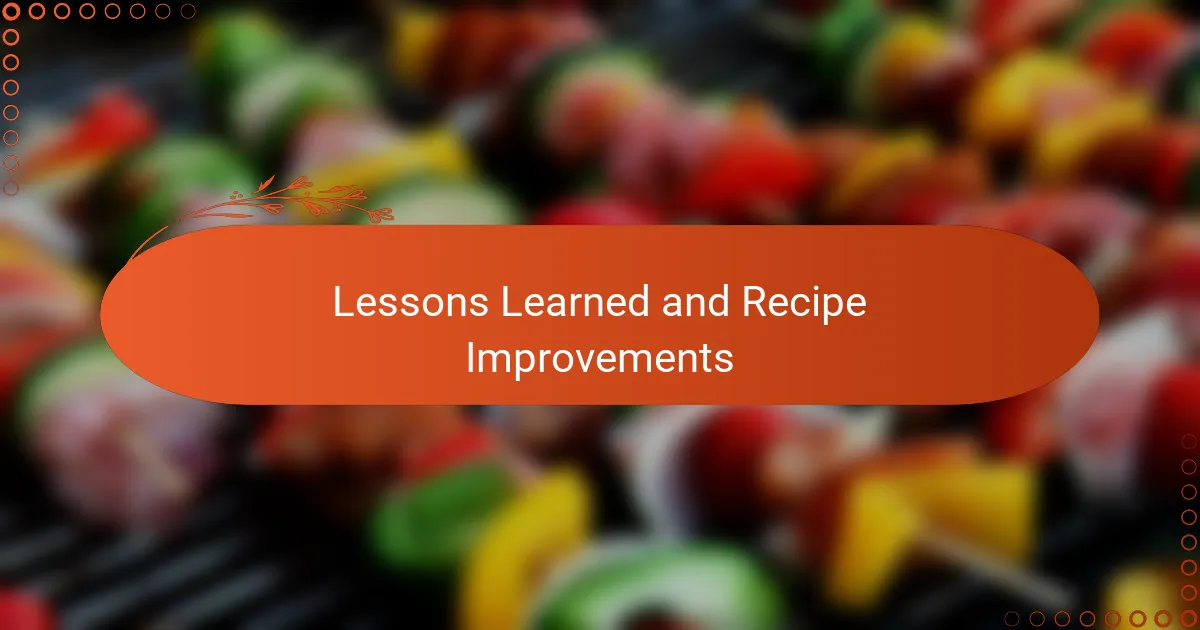
Lessons Learned and Recipe Improvements
One thing I learned early on is that tweaking sugar amounts based on the natural sweetness of the berries makes a huge difference. Too much sugar can mask the fruit’s true flavor, while too little risks the jam not setting properly. Have you ever adjusted a recipe mid-process because the berries surprised you? That moment taught me to trust my taste buds over strict measurements.
I also realized that experimenting with cooking time helps fine-tune the texture. Some batches benefited from a few extra minutes on the heat, while others set better with a quicker boil. It’s really about paying attention and being flexible. What if we all approached jam making less like following rules and more like a gentle conversation with our ingredients?
Finally, I found that adding a splash of lemon juice brightens the jam and aids in preservation. One time, I forgot this step, and the jam tasted dull and lacked that fresh zing I love. Small adjustments like this keep the recipe evolving, reminding me that perfection is really a moving target—and that’s part of the fun. Have you noticed how your jam improves with every jar you make? I certainly have.
